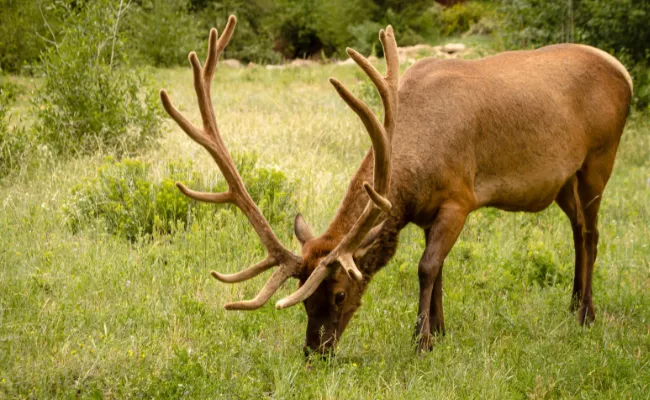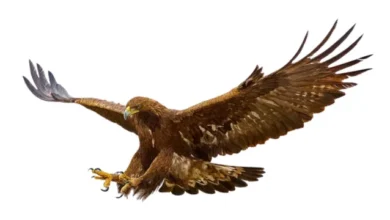
Majesty of the Elk, scientifically known as Cervus elaphus canadensis, represents the epitome of grace and grandeur in the animal kingdom. As the largest and most advanced subspecies of red deer, the elk’s presence spans across North America and the high altitudes of Central Asia. In this comprehensive guide, we delve into the fascinating world of elk, exploring their biology, behavior, and cultural significance.
Taxonomy and Naming
The elk, often interchangeably referred to as wapiti, traces its etymological roots to ancient Germanic languages, where it connotes meanings of “stag” or “hart.” Remarkably, in Europe, the term “elk” denotes the moose, while in North America, it firmly establishes itself as the proper name for the majestic Cervus elaphus canadensis. This naming intricacy highlights the cultural and linguistic diversity surrounding this magnificent creature.
Biology and Adaptations
Elk, classic representatives of the red deer family, exhibit unique adaptations tailored to their diverse habitats. From open plains to coniferous rainforests, elk demonstrate versatility in their ecological niche. Notably, they evolved as fast endurance runners, equipped with strategies to evade predators even in rugged terrains. Large male elk from regions like Alberta can weigh up to 840 pounds, showcasing their impressive stature and robustness.
Coat Variations and Seasonal Changes-Majesty of the Elk
One of the most visually striking aspects of elk biology is the variation in their coat, especially throughout different seasons and life stages. From the dark neck manes in winter, providing insulation and protection, to the lighter summer coats, elk undergo remarkable transformations. Nursing calves, in particular, exhibit distinct markings, eventually transitioning into adults that form new herds. These changes not only serve functional purposes but also contribute to the aesthetic allure of these creatures.
Distribution and Conservation
Elk’s distribution spans a vast geographical range, from the Yukon to northern Mexico in North America and across the high plateaus of Central Asia. Despite historical challenges, such as market hunting in the 19th century, concerted conservation efforts have led to their successful reintroduction and thriving populations. However, ongoing conservation initiatives remain crucial to safeguarding their habitats and genetic diversity.
Cultural Significance
Beyond their ecological role, elk hold profound cultural significance among indigenous communities and modern societies alike. Throughout history, they have been revered for their hide, meat, and ceremonial value. Moreover, elk farming practices, particularly for the production of velvet antlers, have transcended geographical boundaries, contributing to global healthcare traditions.
Differences Between Elk and Deer
The differences between elk and deer are significant and encompass various aspects of their biology, behavior, and ecology. Here’s a breakdown of the distinctions between these two magnificent animals:
- Size:
- Elk are considerably larger than most common deer species, such as white-tailed deer, red deer, roe deer, and mule deer.
- On average, male elk can weigh anywhere from 400 to 1,100 pounds, while females typically weigh between 375 and 650 pounds.
- In contrast, male deer generally weigh between 100 and 300 pounds, with large bucks reaching up to 450 pounds.
- Elk also stand taller at the shoulders, ranging from 3 to 5 feet, compared to the 2 to 4 feet height of most deer species.
- Habitat:
- Elk prefer forested, mountainous regions, although they may migrate between elevations throughout the seasons.
- Deer inhabit a wider range of habitats, including deserts, plains, grasslands, woodlands, and tundra.
- Elk have a broader distribution, inhabiting North America, Central Asia, and East Asia, while deer also reside in Europe, South Asia, and South America.
- Antlers:
- Elk antlers are generally larger than those of deer, with mature elk antlers weighing up to 20 pounds each and reaching up to 4 feet long.
- Elk antlers tend to have more branches compared to similarly-aged deer antlers.
- Deer antlers are smaller and contain fewer branches, especially in younger individuals, resembling spikes.
- Coat and Color:
- Elk coats are thicker and longer than deer coats, with elk sporting a shaggy mane around their upper chest and neck.
- Elk coats typically appear brown and grey, with black legs, while deer coats come in various colors from brown to red to beige.
- Deer coats may change color during winter to match their surroundings, whereas elk coats remain relatively consistent.
- Speed:
- Both elk and deer are fast runners, but elk generally have a higher top speed, reaching up to 45 miles per hour compared to 30 to 45 miles per hour for most deer species.
- Diet:
- Elk primarily consume grasses, twigs, tree bark, forbs, and shrubs, while deer also eat leaves, fruits, nuts, corn, alfalfa, and may supplement their diet with lichen or fungi.
- Sound:
- Elk produce loud bugling calls, while deer sounds are generally more hoarse and high-pitched, resembling bleats or high-pitched squeals.
- Tracks:
- Elk tracks appear tooth-shaped with two rounded, parallel halves, while deer tracks look more heart-shaped and delicate.
Regarding interbreeding, while it is generally uncommon due to differences in chromosome counts (elk have 68 chromosomes, deer have 70), there have been instances of hybridization between certain species, such as white-tailed deer and mule deer, as well as captive stock red deer and elk, resulting in viable offspring.
Conclusion
In conclusion, the elk epitomizes resilience, adaptability, and majesty in the natural world. From their diverse habitats to intricate biological adaptations, these creatures continue to captivate the imagination of scientists, conservationists, and nature enthusiasts worldwide. As stewards of our planet, it is imperative to ensure the preservation of elk habitats and ecosystems, fostering a harmonious coexistence between humans and these magnificent beings.



